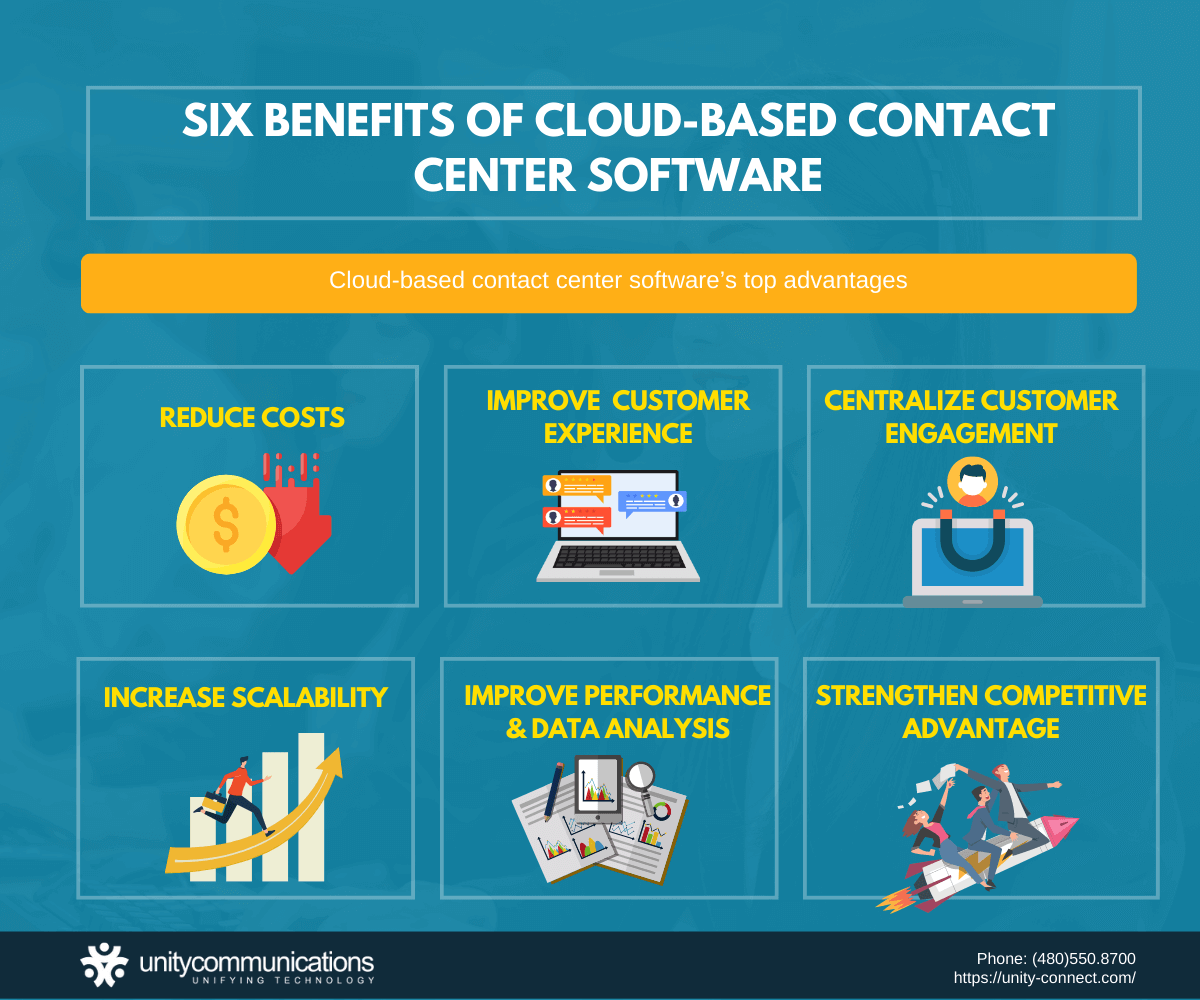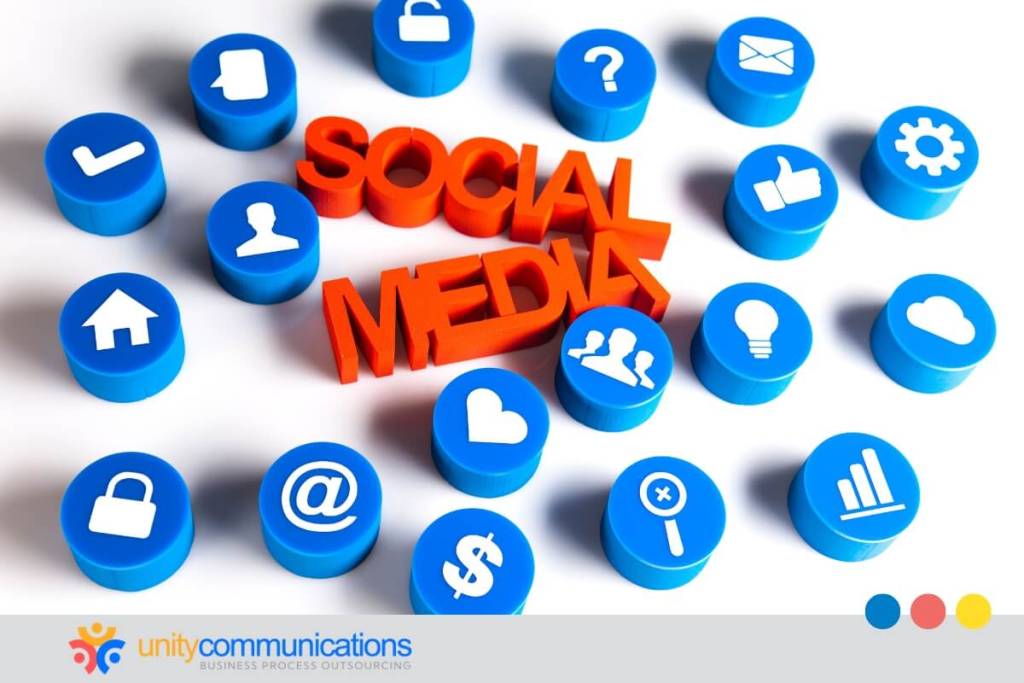Table of Contents
Outsiders see contact centers as office spaces packed with workers wearing headphones in front of their computers. But once they look deeper into the details, a well-structured contact center is more complex than expected.
Understanding the underlying definition of contact centers helps you develop a concrete plan for delivering superb customer service. Knowing contact center as a service (CCaaS) and its meaning also guides your efforts to provide a personalized customer experience.
This article walks you through all the essential points you need to know before hiring a third-party contact center provider.
What Are Contact Centers?

Contact centers are the touchpoints for business and customer interactions. They address customer questions, complaints, and issues regarding purchases. They also help companies directly promote products and services. Contact centers deliver inbound and outbound customer service through the following communication channels:
- Phone calls
- Live chat
- Text messaging
- Social media
- Video calls
Establishing in-house contact centers requires enterprises to allocate considerable funding to obtain the best talent and infrastructure. They also need significant capital to provide their customer service agents with a comfortable workspace. Extra dollars are vital for maintenance, system updates, and workforce training.
Hence, many companies tap into business process outsourcing (BPO) providers for cost-efficient contact centers. BPO contractors help reduce operating costs by eliminating the need to invest in labor, infrastructure, and real estate. They offer customer support in service packages payable through a long-term contract or a pay-as-you-need option.
As a result of such advantages, Verified Market Research reveals that the contact center outsourcing industry reached $77.78 Billion in 2022. The research firm expects the market value to reach $123.91 Billion by 2030, growing at a compound annual growth rate (CAGR) of 4.53% from 2024 to 2030
Types of Contact Centers
Because of their affordability and effectiveness, third-party contact centers have become the go-to hub for companies aiming to deliver excellent customer service while saving on costs. These businesses chose among the different types of contact centers below.
- Hardware. This requires sufficient office space to house and operate physical, on-premises servers. Hardware contact centers also need regular system updates, maintenance activities, and practical disaster recovery procedures.
- Virtual. Allow agents to work remotely and flexibly. They use cloud-based CCaaS to connect with customers and coworkers in real time. Below is a comprehensive explanation of CCaaS.
- Hosted. This offers increased scalability and cost reduction. Hosted contact center processes run on another service provider’s back-office systems.
- Inbound. Agents receive inquiries from customers experiencing product defects, technical issues, or service confusion via phone calls, live chat, and email.
- Outbound. Agents reach out to customers for product promotions, market surveys, and customer feedback requests. Customer service representatives (CSRs) also follow up on customers’ unresolved problems.
- Hybrid. These centers provide both inbound and outbound customer service. Providers train their support agents to take and make multiple inquiries.
- Multichannel. Centers that allow the use of multiple communication channels to respond to customer queries. CSRs collect customer data one at a time per communication platform to address issues effectively.
- Omnichannel. Integrates the different communication platforms into single software for streamlined customer support. Customer details are shared across all channels for easy access. Therefore, conversations switch between channels seamlessly. This has a special CCaaS meaning.
- Onshore. Contact centers operate in the same region as client organizations. This is ideal for companies targeting domestic customers.
- Offshore. Centers deliver customer service from overseas. Enterprises hire offshore contact centers to reduce expenses and access global talent. This is the most convenient choice when accommodating customers worldwide.
- Nearshore. Centers run operations from a client’s neighboring country. Nearshore contact centers deliver customer service with a cultural approach similar to onshore providers but at more affordable costs. They also share the same time zone, which addresses barriers to communication and coordination.
How the Contact Center Works
Contact centers deliver customer service and direct marketing to support small, medium-sized, and large enterprises. They have the same organizational structure as call centers. But contact centers go beyond simply delivering voice support. They also conduct non-voice operations through customers’ preferred channels.
Contact center agents optimize CCaaS to accelerate and personalize customer service delivery. But before discussing CCaaS and its broad meaning, let’s explore how CSRs perform their inbound and outbound contact center duties.
Inbound Customer Service
- Receive incoming calls, chats, emails, text messages, and social media inquiries
- Answer questions about product specifications and service components
- Assist in order fulfillment and shipment booking
- Provide recommendations for simple issues
- Collect customer data for proper problem resolution
- Match and escalate complex problems to company specialists
Outbound Customer Service
- Make outgoing calls and send emails, chats, text messages, and social media inquiries.
- Promote products and services before, during, or after customer interactions
- Follow up on consumer requests and issue resolutions
- Collect bills, payments, and other invoices
- Conduct market research surveys and send out customer feedback requests
What Is CCaaS?

CCaaS is cloud-based software that contact centers use to streamline customer service delivery via multiple communication channels. It integrates communication channels, data management tools, and other relevant solutions for faster and more personalized customer support. Many businesses use the term omnichannel customer service to summarize the meaning of CCaaS.
Types of CCaaS Technologies
Because contact centers transact with billions of consumers daily, they need advanced technologies to speed up processes. The CCaaS platform has all the tools contact centers need to quickly and efficiently respond to huge numbers of customer queries. Below are the common solutions and capabilities of cloud contact center software.
- Artificial intelligence (AI) simulates human intelligence to perform wide-scale business processes. These repetitive tasks include information gathering, data analysis, market prediction, and automated inquiry response and management.
- Automatic call distribution (ACD) allows incoming calls to be distributed to available customer support agents automatically. ACD assists inbound contact centers in organizing large volumes of calls fast and effectively. This helps avoid employee burnout and overwork.
- Email response management gathers and sorts out customer concerns sent via email. The system then automatically routes such queries to appropriate support agents.
- Interactive voice response (IVR) consolidates text-to-speech technology or pre-recorded messages with a dual-tone multifrequency interface (DTMF). IVR enables customers to provide and access data even without a live agent.
- Robotic process automation (RPA) automates customer service tasks such as data collection and customer response. RPA enables copy-pasting information, template auto-fill, and automated field entry. A chatbot is an example of RPA that allows quick replies to repetitive customer inquiries.
- Integrated communication channel combines the management of phone calls, live chat, text messaging, email, and social media into a single solution. This omnichannel approach, typical of CCaaS, enables customer and agent interactions to switch between platforms seamlessly.
- Knowledge management serves as a content repository easily accessible through desktops. Agents can use this system to review work policies, strategies, and procedures. The platform helps reduce the time for workforce training.
- Customer relationship management (CRM) gathers, stores, and analyzes customer records such as account information and contact history. The CRM system accelerates the process of understanding and reporting changes in consumer behavior and preferences.
- TTY/TTD communications is short for teletypewriters (TTY) and telecommunications display devices (TDD). It assists customers who have hearing disabilities.
- Cloud services simplify secure data storage, retrieval, and sharing over the internet. These solutions allow agents to collaborate while working remotely.
- Workforce management helps streamline staff scheduling and task distribution. The platform helps team leaders and executives monitor employee performance.
How CCaaS Works
Grasping how CCaaS operates is essential for its effective implementation. Thanks to its cloud-based nature, setting up CCaaS is more straightforward compared to traditional on-premises contact center setups. To get started, businesses require only basic equipment like workstations, headphones, and a reliable internet connection.
The responsibility of managing the contact center’s infrastructure falls to the CCaaS provider. This necessitates that client organizations align their internal systems with the capabilities of the cloud software to ensure seamless integration.
Team members log into the CCaaS portal when handling customer service inquiries. Here, they utilize various technologies available on the platform to efficiently and effectively execute their tasks. Meanwhile, supervisors have the ability to track and evaluate agent performance using the same software, guaranteeing that all operations are conducted smoothly and up to standard.
How Big Is the CCaaS Market?
The COVID-19 pandemic has changed how many businesses operate. Globalization and digital transformation also influence how they reach their customers worldwide. Thus, they rely on cloud-based contact center solutions to ease customer support processes and workloads.
According to a new report from Fortune Business Insights, the global contact center software market was valued at $34.66 billion in 2022. The research firm expects the industry to reach $164.01 billion by 2030 at a 21.3% CAGR.
The study further states that the increasing demand for automated customer care services primarily drives CCaaS growth. Due to persistent global challenges and advancements, more enterprises tap into cloud-based contact centers as internet-based services expand.
Six Benefits of Cloud-based Contact Center Software

Understanding contact centers, CCaaS, and their meaning is crucial to deciding whether hiring a provider or setting them up in-house is more beneficial. This helps you develop a concrete plan when outsourcing your customer service.
On the other hand, you must also know what to gain from contracting a third-party contact center to set your expectations and measurable goals. Such insights will also guide you in aligning your outsourcing investments with your budget allocations. Continue scrolling down to look at the cloud-based contact center software’s top advantages.
1. Reduce Costs
CCaaS helps businesses reduce their labor, infrastructure, and real estate costs. They don’t have to hire many customer service agents in-house or from third-party contact centers. The cloud platform quickly and accurately accomplishes repetitive tasks without human intervention.
Because CCaaS runs over the internet, businesses no longer need to dedicate a large facility to house on-premises data and communication infrastructure. They also connect and collaborate with their service providers remotely.
Companies can access the cloud contact center software through a formal contract with their selected vendors or via monthly subscriptions. This generates savings because clients no longer need to pay separately for every resource.
2. Improve Omnichannel Customer Experience
Customers seek support regarding their purchases through their most preferred channels. As much as possible, they want to receive quick, personalized, and convenient customer service. They tend to switch brands if they do not receive an immediate response and resolution to their problems.
As indicated in the meaning of CCaaS, the platform offers an omnichannel approach to enhancing the customer experience. It provides CSRs with a single view of customer inquiries across multiple communication systems. Hence, they address concerns immediately and efficiently, even if buyers want to switch channels.
3. Centralize Customer Engagement
Unifying customer engagement into one solution offers a significant advantage for both consumers and agents. CCaaS helps boost customer satisfaction and retention by providing quick responses and reducing wait time. It also allows them to reach out for customer support via their selected channels.
Meanwhile, CSRs get a real-time overview of customer data, requests, and potential resolutions. AI and automation tools also assist them in dealing with duplicate inquiries. They have sufficient time to address complicated tasks and consumer issues.
Ultimately, the cloud platform boosts customer and employee productivity. Buyers work on their activities while interacting with agents virtually. Support representatives can also perform their other assignments without worrying about unattended customer queries.
4. Increase Scalability
You can’t separate scalability from the meaning of CCaaS. The cloud contact center software allows businesses to customize their customer service approach. Thus, agents adapt to the latest customer demands and market trends without compromising the quality of their work performance.
CCaaS also helps you scale up or down your operations during off or peak seasons. The platform enables you to expand capacity and add functionality whenever needed.
Although CCaaS can’t function without connectivity, it still reduces your downtime. After all, fixing a loss of internet connection is more manageable than repairing a faulty on-premises private branch exchange (PBX) system.
As your service reliability increases, customer trust in your brand also strengthens. If customers receive immediate responses to their problems and feel satisfied with the resolution, they will surely return to avail of your offerings. Expect improvement in your sales and revenue after achieving customer satisfaction and retention.
5. Improve Work Performance and Data Analysis
Support teams encounter massive amounts of data from their daily transactions with customers. Without modern solutions, collecting and analyzing such information slows work progress and hinders teams from prioritizing complex tasks. These gaps result in burnout and lower productivity.
CCaaS helps address those issues by allowing the optimization of AI and automation. These new technologies help streamline the completion of repetitive tasks and inquiries. They automatically sort out which queries need prioritization and special treatment.
Moreover, AI-powered CCaaS analytics solutions accelerate big data analytics and reporting. The resulting insights inform businesses on changing customer needs, preferences, and buying behavior. They use such data to improve their offerings and enhance customer experience.
6. Strengthen Competitive Advantage
Global issues, technological advancements, and customer demands drive fast-paced market competition. Businesses thus continue to explore innovative ways to adapt to the latest industry trends. They need a stable solution to maintain their good market reputation.
Companies use CCaaS as a solid weapon to survive in the rapidly changing business landscape. The contact center software provides them with automation tools to streamline customer service delivery and task completion. Providing rapid responses and resolutions to customer issues helps buyers to stay loyal to the brand.
Zendesk proved that in its recent CX Trends 2022 report. The CRM software provider found that customers expect quick, easy, and effective service. They will switch to other brands if they don’t receive such assistance from their current retailers.
In addition to accelerated support, CCaaS enables businesses to deliver personalized customer service. The cloud contact center software has an omnichannel customer service feature. This capability allows consumers to seek quick and effective assistance through their preferred communication platforms.
According to the same market study, 90% of 3,500 polled consumers will stick to companies that personalize customer service. Some 93% say they will spend more with businesses that offer their most favored customer support option. Such benefits attract more loyal customers and strengthen your competitive advantage.
The Bottom Line
Businesses of all sizes need a central hub to manage their customer interactions. Whether in-house or outsourced, contact centers help them provide an unmatched customer experience. Optimizing CCaaS to deliver fast and personalized support further expands its loyal customer base.
Knowing the meaning of contact centers and CCaaS helps validate your investment decisions. These insights are crucial to planning your customer service outsourcing, from identifying technology types to understanding processes. Also, details on CCaaS benefits and market size offer a glimpse of what you should expect, helping you to align your resource allocations better.
Now that you know the different aspects of contact centers and CCaaS, you can start hunting for the best provider of these platforms. Don’t hesitate to connect with Unity Communications today. The award-winning BPO provider offers a powerful cloud-based contact center solution to boost your personalized, omnichannel customer support.




